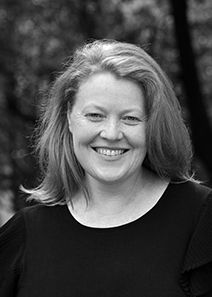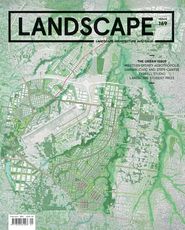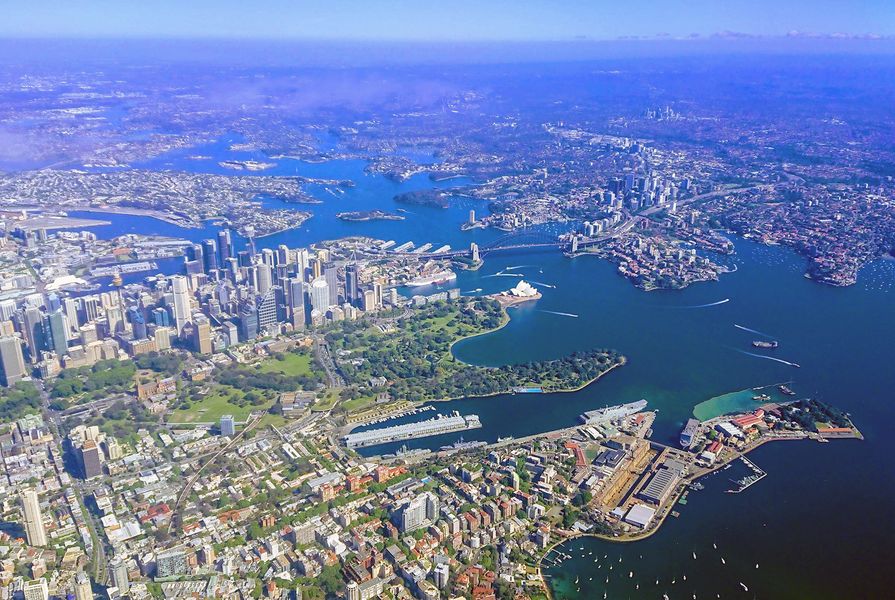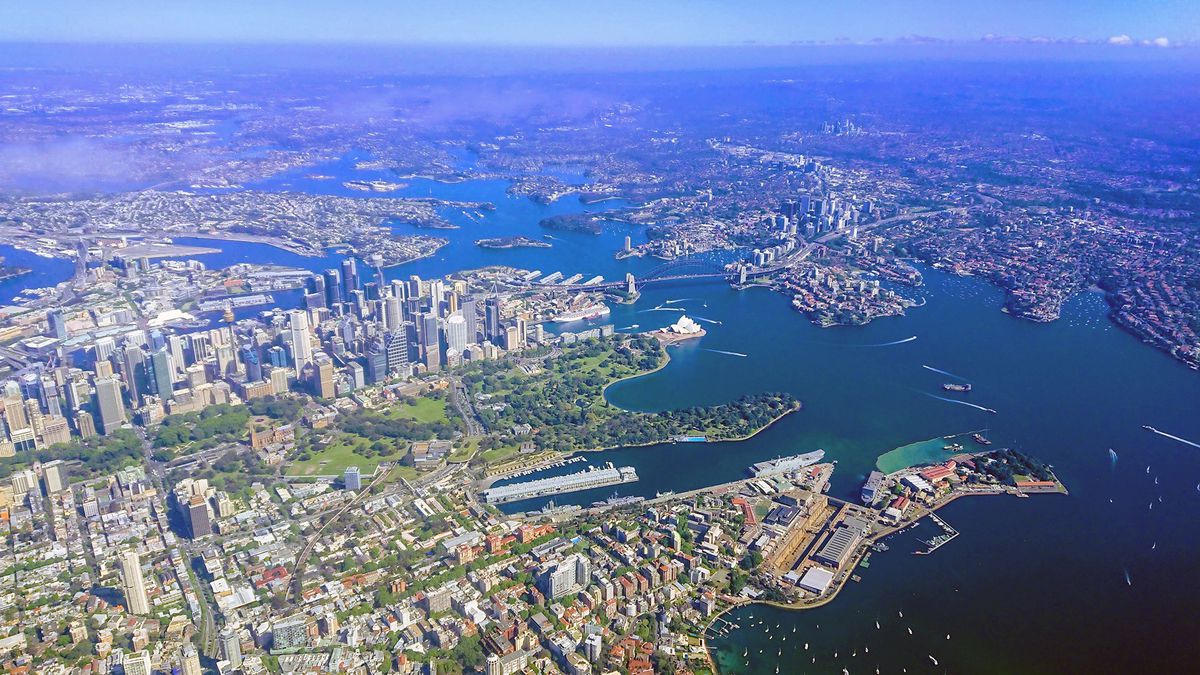
Fiona Morrison, Director of Open Space and Planning at the Department of Planning, Industry and Environment (DPIE).
Emma Washington: What’s your role?
Fiona Morrison: I’m the director of Open Space and Planning at the Department of Planning, Industry and Environment (DPIE). Within the Public Space Division, I lead a team of design and planning professionals that plan for, design and deliver open spaces across NSW. This work supports the delivery of the NSW Premier’s Priority for greener public spaces and includes the preparation of critical strategic plans to advocate for the provision of high-quality open space for communities.
EW: How has your career developed?
FM: I graduated around 20 years ago and commenced my career in local government in Sydney, responsible for strategic planning for open space and recreation. I worked in a few different local governments across Sydney and the Hunter Valley, then spent some time in the private sector, where I worked in consultancy at Clouston Associates in Sydney, and a little time in the development sector with Lendlease. Throughout my career, I felt there were barriers to being able to deliver outcomes for open space as efficiently and effectively as I would like. When my current role at DPIE was created, I saw it as an opportunity to unpack some of those barriers and create ways to be able to plan and deliver open space more collaboratively and effectively.
EW: What do you see as the appeal of these roles for landscape architects?
FM: The scale of projects in government can be extremely specific or incredibly broad, so you learn a lot and you’re surrounded by a diversity of people and professions working together to achieve the creation of liveable communities. I’ve recently spent six months working with our legal team, putting together agreements with councils to deliver open space in partnership. They learn, we learn – it’s a melting pot.
Landscape architects are great at understanding all pieces of the puzzle and are very collaborative. We are building living, breathing infrastructure that gets better with age, and having this different type of thinking influencing other people and professions across government is very valuable.
EW: Why are landscape architects well suited to strategic city-shaping positions and what particular skills do they bring to the table?
FM: Within my department, design thinking is really important. It’s not just about theories or formulas, but about immersing yourself into a place and understanding how people move. Planning can sometimes be quite two-dimensional, whereas landscape architects generally think three-dimensionally. Because of the nature of the work, landscape architects also think long-term. Their construction awareness is also important, as understanding of the full life cycle of space – from planning and design through to construction and management – is vital to the creation of great places.
EW: Have you seen a shift in your department in terms of hiring landscape architects recently?
FM: In my three years with DPIE, I’ve seen a notable change. When I joined the department, there were a few of us [landscape architects] – certainly in the Government Architect’s Office there are landscape architects – but not a lot within the true centre of the department. Since the Open Space team was created three years ago, I’ve built a team with landscape architects who are working across a whole range of strategy planning program and project streams, delivering, building and planning. The desire for that knowledge by other teams within the department is increasing. As the department has moved towards more place-focused planning, the value of design thinking is extremely strong and having a Minister for Planning and Public Spaces has put it really front and centre that planning for high-quality public spaces is critical.
EW: What are the major issues/challenges you’re engaging with in your work at the moment?
FM: Proving the value of open space is still a challenge. Everyone says they want great public spaces, but when it comes to recognizing the economic value and social benefits – that’s one of the biggest challenges we’re currently facing. But it is changing. I’m now working across government agencies on various projects, such as with Transport for NSW and the Department of Education, to create public spaces for the community. Seeing the increase in investment in open space across government is very encouraging. Another challenge is the speed of change, growth and development, and the fact that we have to plan for the future as well as address some legacy issues to improve access to and the quality of open spaces across the state.
COVID-19 has presented challenges for the delivery of our programs. The community is at the heart of all we are doing and we want to ensure we’re continuing to understand community needs and creating plan strategies and programs that meet these needs. The pandemic has required us to thinking differently about how we work.
EW: What are some of the major projects currently in the works?
FM: [One is] our Open Space program, where $150 million has been allocated for the creation of more and better open space in Greater Sydney. Within this, Parks for People has $50 million designated for the creation of eight parks across Greater Sydney, reaching from Appin to Penrith. Four of those parks are new and four are upgrades. The project focuses on assessing government-owned land where there are deficiencies in open space or a need for improved open space, and using that land, with capital investment, to create new parks, which we will transfer to council to be a public open space asset in the long term. Five parks – Appin, Penrith, Ermington, Fairfield and Leppington – are underway, and we’re working with councils and the community to develop their designs. We have a diversity of landscape architectural firms working with us, including Moir Landscape Architecture, Context Landscape Architecture, AECOM and Phillips Marler.
Everyone Can Play is another of our flagship programs – with the support of funding, we have $20 million to influence the creation of inclusive spaces across the state. And what’s happening now is that we’re actually looking at that [concept] of inclusion outside of just a playground and making it about our cities being inclusive.
We also have the NSW Public Spaces Legacy Program that’s part of the NSW Government’s work to protect the health of the community, provide economic and jobs stimulus in response to the pandemic and deliver a legacy of safe, quality public and open space. The program incentivizes local councils to accelerate their assessments of development applications and rezonings to create new development capacity and meet demand for housing and employment over the next decade. $250 million in funding will be made available to eligible councils across NSW for planning, design, construction or land acquisition costs for new and existing public and open space.
Our two major strategic projects are the NSW Open Space Strategy and the Best Practice Open Space Guidelines for NSW, which are looking at the important standards, metrics and guidelines on provision. How do we ensure that councils, developers, consultants and industry know how to put the right park in the right place? We’ve completed the Greater Sydney Outdoor Survey and the draft Greater Sydney Recreation Report to help understand community needs and we are working towards building a better understanding of the needs of the community across regional NSW.
EW: What do you see as the future for landscape architects working in these kinds of strategic government roles in Australia?
FM: The influence landscape architects can have is being better understood across government. The profession has so much to offer in the public sector – and not just in the traditional delivery of design, but in strategic thinking and policy creation. The way landscape architects are educated in creative and critical thinking, and how they approach problem-solving at the strategic masterplan scale to detail decisions onsite, is of great benefit. Our city-shaping efforts need creative solutions – we can’t keep doing the same thing. The heart of our communities is our people and the environment we live in – and landscape architects design for people and the environment.
To read Emma Washington’s interview with Malcolm Snow, go here; to read her interview with Emma Appleton, go here.
Source

Practice
Published online: 12 Mar 2021
Words:
Emma Washington
Images:
Craig Davies
Issue
Landscape Architecture Australia, February 2021












